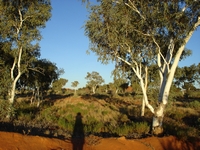Australia So Much to See


We left Carawine Gorge to travel on rather muddy roads as the rain had mostly passed just to the north of us and followed our route all the way to the Northern Territory border. The Telfer road was not closed following the rain and was still being used by mining trucks. Our rig was soon covered in red mud. This road deviates to the north around the Telfer mining settlement, as special permission needs to be obtained to enter the mining area.
The Gary Junction Road Alice Springs, Western Australia section
The colours of the desert. Low long sand dunes in orange shades like the near one or red like the one in the distance contrast with the bluish green of the spinifex and occasional patches of flowering shrubs.
Passing through the northern section of the Karlamilyi (Rudall
We did not visit the attractions in the south western part of the this huge National Park. Karlamilyi (
Crossing a dune. The road has been formed to create a firm base for all traffic.
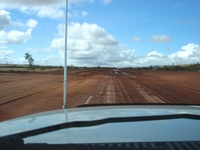
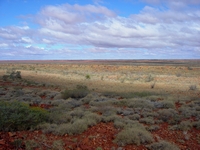
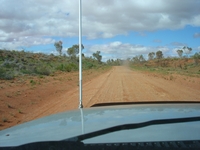
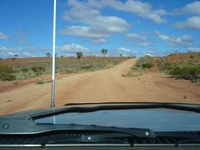
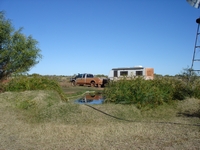
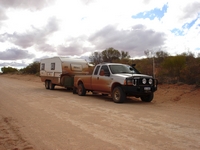

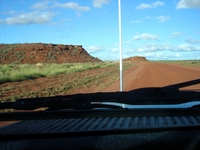
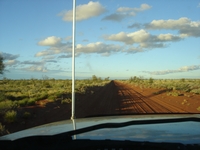
Kunawarritji is near Well 33 and approximately half way along the
After leaving Kunawarritji, we soon reach the
We shared the camping area with several groups of travellers. In the morning camels visited the campground.
Leaving Well 33 after a peaceful night. The morning was a flurry of activity as the groups packed up their camps, filled their
water canisters and headed on their way be it north or south along the
As we headed east from the
Jupiter Well is a popular and lovely camp ground in a grove of elegant desert oak trees. A bore with a manual pump provides good water at the camp, although nothing else is provided. We, and other campers heading in the opposite direction, spent a pleasant weekend at Jupiter Well. The original Jupiter Well site is on the opposite side of the road.
Gary Junction is at the junction of the Jenkins Track from the west, the
Along this lovely remote and quiet red track, a lone car approached, and flagged us down. The driver called out to introduce
himself. My husband recognised him instantly. They had worked in the same area for many years and he now lived in another
state. One car all day and we knew each other. News over the past few years was shared over cups of tea in the middle
of the road.
Jupiter Well was dug between 20th to 24th August in 1961 by a division of National Mapping Survey Team who spent some months surveying
in the desert and looking to avoid trucking water 480 kilometres from near Mount Liebig in the Northern Territory. It was named
after the planet Jupiter was reflected in the well late on the night of the 22nd. See the story of Jupiter Well.
Near a crest with a communications tower is the wreck of someoneís dream. The remains of a caravan lie upside down by the road. Someone has place the toilet on the top. Recovery costs in the event of an accident or breakdown often outweigh the value
of the vehicle, so wrecks are regularly seen in the outback.
The well was re-dug in 1985, but now there is little more than a depression in the ground. A plaque placed at that time shows
the nearest watering points were at Kiwirrkurra 147 kilometres to the east and Well 35 (on the
A little further east of this point is a water tank set back from the road. Another traveller told us the water is very good. We did not investigate, but good to know for anyone who may be stranded in the area and in need of water.
A loop road goes to the Kiwirrkurra township, where the burnt out remains of Len Beadellís truck is on display. It was
burnt out approximately thirty kilometres east of Kiwirrkurra, and was set up as a display at Kiwirrkurra in 2004.
On 1st July 1963 Len salvaged the tray floor and six springs for repairs to their current fridge trailer.
From our overnight stop near Dovers Hills, towards the
Soil colours varied as we continued towards the
A Len Beadell marker, as we crossed from
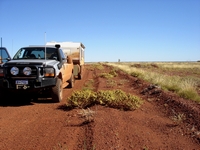
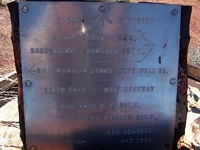
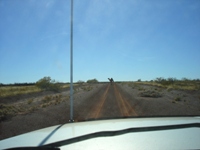
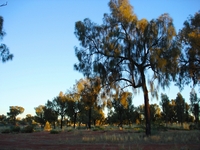
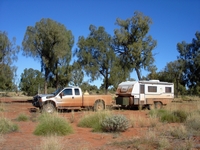
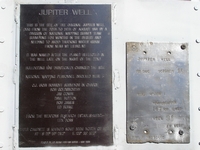
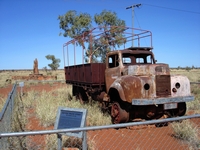
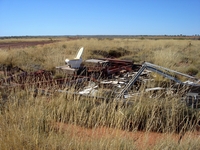
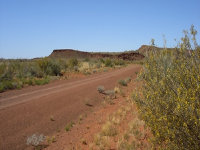
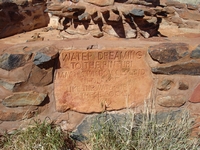
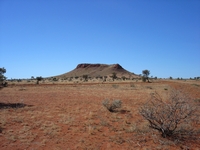
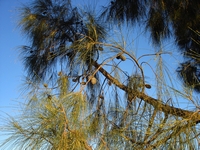
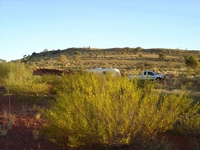
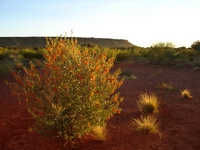
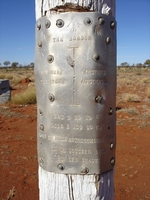
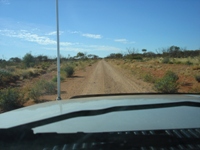
In March 2001 the entire settlement was flooded and evacuated. Since then levy banks and drains have been constructed on two sides of the settlement to divert water away from the town.
A Western Australian Department of Planning report in 2004 indicated that tourists did not visit Kiwirrkurra, and of an estimated 800 to 1,000 vehicles passing each year, only around ten to fifteen entered the settlement.
The Last Desert Nomads: In October 1984, a family of nine Pintubi, referred to as the ĎLost Nomadsí or the ĎPintupi Nineí, were reunited with their extended family at Kiwirrkurra. Until this time the small group had lived a traditional nomadic life moving from waterhole to waterhole. It is believed they had become separated from other Pintupi more than twenty years earlier, and when found, the group had never seen a motor vehicle, worn clothes nor had any contact with Western society. Read more about the 'Pintupi Nine'.
WATER DREAMING
TO THE PINTUBI
MAY HIS WISDOM DESCEND UPON YOU LIKE THE WATER UPON THESE ROCKS
1985
